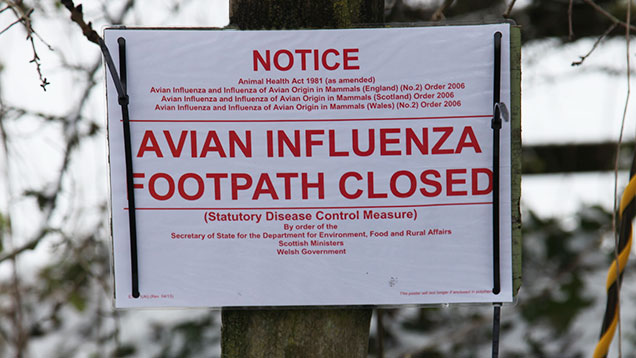Culling gets under way on Lancs bird flu farm
 © Tim Stewart News/Rex Shutterstock
© Tim Stewart News/Rex Shutterstock Culling commenced on Saturday afternoon (11 July) to take out two layer flocks in Lancashire, following an outbreak of avian influenza on a farm to the north-east of Preston.
Some 120,000 colony birds and 50,000 free range have been affected and Defra has confirmed that the strain is a H7. But it says it will not be able to confirm the sub-type until tests are completed over the weekend.
Given that mortality is said to have reached 20% in some of the free-range sheds, and 5% in the colony unit, expectations are that it will be confirmed as a highly pathogenic strain.
See also: Bird flu threat escalates as virus mutates
If so, then the current 10km Temporary Control Zone around the farm – which belongs to Staveley’s Eggs – will be “upgraded” to an official 3km Protection Zone and 10km Surveillance Zone.
The effects are much the same, however, with movement controls already imposed to prevent the spread of disease.
These include restrictions on the movement of poultry, eggs, other animals, carcasses, used poultry litter and manure off farms within the zone.
There are also restrictions on bird gatherings (fairs, shows, exhibitions), and the release of game birds.
Culling is likely to be quite time consuming. After accounting for the mortality, there are still about 150,000 birds to dispose of.
For the colony unit, this will involve removing the birds from cages and taking them to the attendant Containerised Gassing Units (CGUs).
Animal and Plant Health Agency (APHA) officials are also in the process of carrying out “tracer visits”, to establish the extent of dangerous contacts. This may include things like known lorry and/or staff movements from the affected holding.
Government figures suggest that the area is quite “poultry dense”, so there are likely to be many contacts and a lot of people affected by movement restrictions.
Hatchery business Tom Barron is located in that part of the world.
Movement licences are not expected to be issued for several days, until the APHA is confident that it has contained the disease. Eggs are likely to be the first items cleared for collection in the zones.
The British Free Range Egg Producers’ Association (Bfrepa) has called for the chief vet to initiate a housing order for all birds in the region.
“We would like all birds within a 50km zone at least to be housed,” said policy director Robert Gooch. “That would probably cover the whole of the north west. We would urge all producers to look carefully at their biosecurity.”
Avian influenza last appeared in the UK in February, when low pathogenic H7N7 infected a flock of broiler breeders in Hampshire.
Prior to that, highly pathogenic H5N8 hit a flock of breeder ducks in East Yorkshire.
On both occasions, a number of important export markets for British poultry were closed, until the UK regained its AI-free status – three months after completion of secondary cleansing and disinfection on the affected premises.
If you suspect any strain of avian flu you must tell your nearest Animal and Plant and Health Agency (APHA) office immediately. Failure to do so is an offence.
How to spot avian influenza
There are two types of avian influenza.
High pathogenic avian influenza (HPAI) is the more serious type. It is often fatal in birds. The main clinical signs of HPAI in birds are:
• Swollen head
• Blue discolouration of neck and throat
• Loss of appetite
• Respiratory distress such as gaping beak, coughing, sneezing, gurgling, rattling
• Diarrhoea
• Fewer eggs laid
• Increased mortality.
Clinical signs can vary between species of bird and some species may show minimal clinical signs (ducks and geese).
Low pathogenic avian influenza (LPAI) is usually less serious. It can cause mild breathing problems, but affected birds will not always show clear signs of infection.
The severity of LPAI depends on the type of bird and whether it has any other illnesses.

